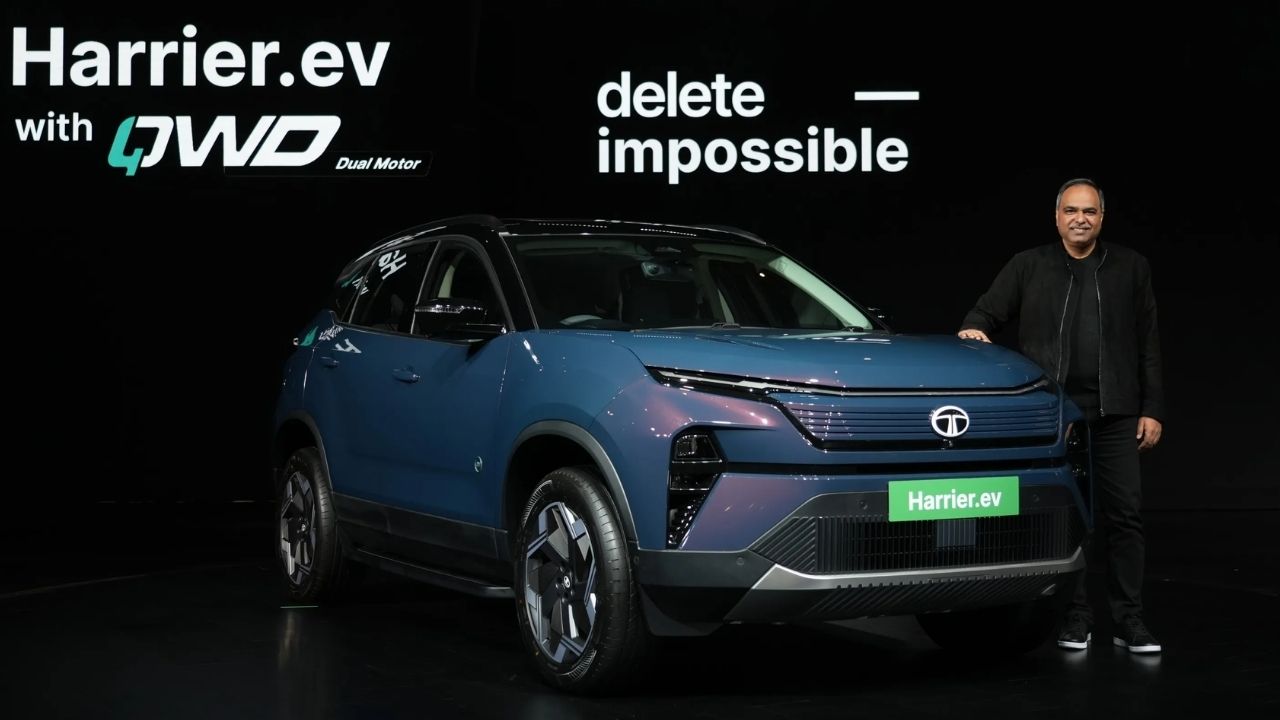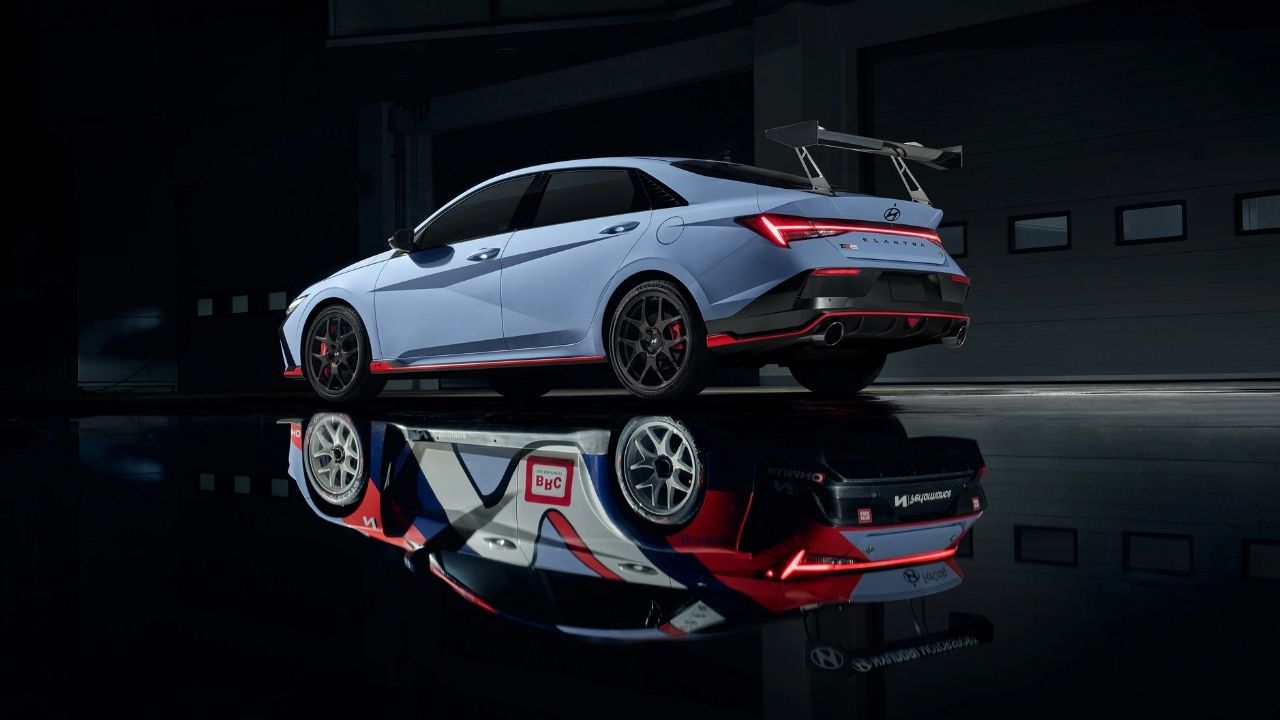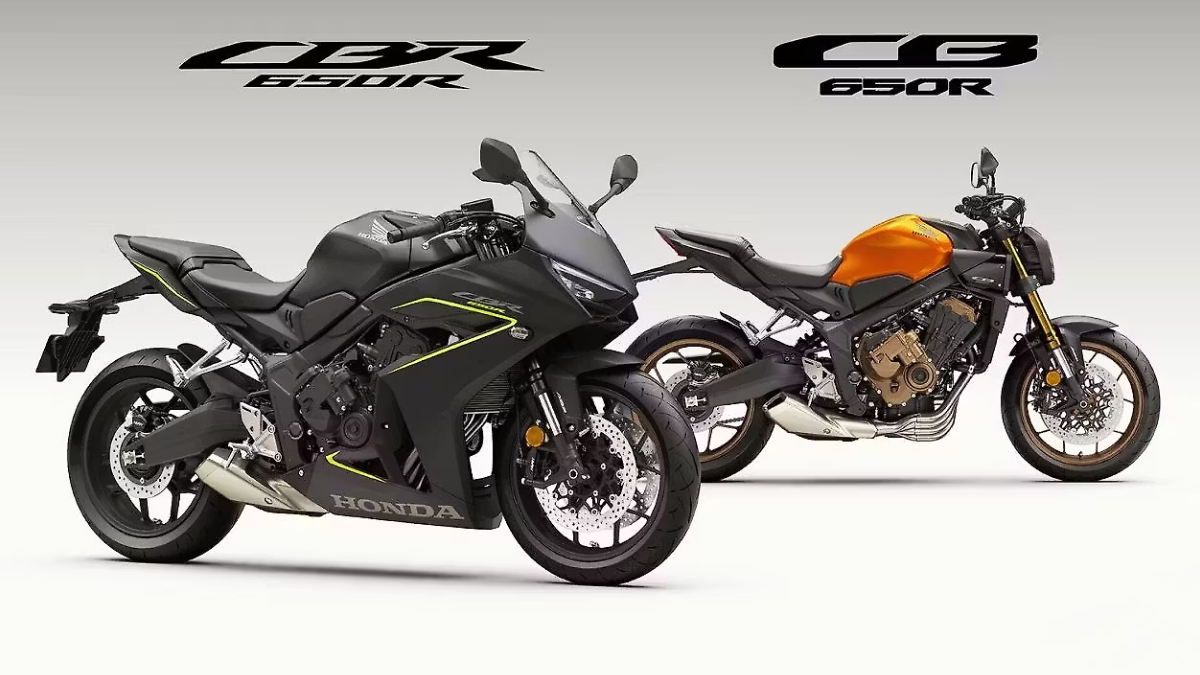The Maruti Suzuki Victoris enters India’s intensely competitive midsize SUV space, aiming squarely at segment leader Hyundai Creta. While Maruti already sells the Grand Vitara, the Victoris widens reach by retailing through the larger Arena network and is slated for exports to more than 100 countries. On paper, it promises breadth of powertrains, a sharp new design, and crucially a first for Maruti Level 2 ADAS. The question is whether this well-rounded package has the depth to challenge established rivals.
Design and Engineering
Score: 8/10
The Victoris makes a striking first impression. The face uses segmented LED DRLs, a chiseled bumper, and a wide air dam with a skid-plate treatment. Squared-off arches with cladding and strong side character lines lend it the upright, muscular stance buyers expect. The roof and pillars are blacked out to visually stretch the profile, while the slightly raked rear windscreen adds a subtle coupe-SUV vibe.
A segmented LED light bar spans the rear, tying in with a flat tailgate design. Some may find the rear a touch less cohesive than the front, but overall presence is strong and contemporary. Seventeen-inch dual-tone alloys look a size small in those large arches, yet they should aid efficiency and ride compliance. The Victoris sits on Suzuki’s Global C (Suzuki TECT) platform, sharing its basic bones with the Grand Vitara and matching it closely on dimensions.
Quick Summary
Item |
Details |
|---|---|
Segment |
Midsize SUV |
Key Highlights |
Wide powertrain choice, sharp design, first Maruti with Level 2 ADAS |
Platform |
Suzuki Global C (Suzuki TECT) |
Dimensions (L×W×H) |
4,360 × 1,795 × 1,655 mm; wheelbase 2,600 mm |
Standout Features |
10.25-inch digital cluster, 10.1-inch SmartPlay Pro X, panoramic sunroof, powered tailgate |
Safety |
Six airbags standard, 360° camera in higher trims, Level 2 ADAS (Petrol AT) |
Claimed Efficiency |
Strong hybrid up to 28.65 kpl (ARAI), AWD AT 19.07 kpl (ARAI) |
Price Range (Introductory, ex-showroom) |
Rs 10.49 lakh to Rs 19.99 lakh |
Official Website |
Cabin, Space, and Comfort
Score: 8/10
Inside, the Victoris feels familiar to seasoned Maruti owners but with a welcome step-up in design polish. The layered dashboard sports a free-standing touchscreen up top, physical toggles for the HVAC below, and a soft-touch leatherette band with contrast stitching to lift perceived quality. Ambient lighting, a neat new steering wheel with physical controls, and a crisp 10.25-inch fully digital instrument cluster modernize the experience.
Two interior themes are offered. Petrol and CNG variants use an ivory-and-black scheme with silver accents; the strong hybrid goes all-black with rose-gold highlights. The front seats are well-shaped with supportive bolstering and pleasant day-to-day comfort. At the rear, a high seating position and large glass area help, but tall adults may find headroom and knee room tight, and shoulder room is average for three across. Amenities include rear AC vents, USB ports, and a fold-down armrest.
Practicality is sensibly addressed: large door bins, a sizeable glove box, storage under the front armrest, cup holders, a wireless charger, and a cubby ahead of the gear lever. Boot space varies by powertrain. The petrol variant offers the most usable volume; the CNG loses the under-floor recess due to the tank, and the strong hybrid has a higher floor due to its battery. A notable omission is a standard spare wheel; a puncture repair kit is provided, with a spare offered as an accessory.
Features and Safety
Score: 9/10
Maruti has equipped the Victoris aggressively. The new SmartPlay Pro X 10.1-inch touchscreen is responsive and easy on the eyes, and the 10.25-inch digital cluster offers sharp graphics with switchable themes. Higher variants bring ventilated front seats, powered driver’s seat, electronic parking brake (petrol), panoramic sunroof, head-up display, configurable ambient lighting, all-LED lighting, a PM2.5 filter, connected-car tech, and a powered tailgate with gesture control.
Safety coverage is comprehensive. Six airbags, traction control, brake assist, hill-hold, and ISOFIX are standard. Top trims add a 360-degree camera and TPMS. The headline here is Level 2 ADAS on the Petrol AT, including adaptive cruise control, lane-keep assist, autonomous emergency braking, and blind-spot detection. Calibrated for Indian conditions, the systems deliver warnings and interventions without being overly intrusive. The Victoris has received a full 5-star rating in Bharat NCAP and Global NCAP testing, strengthening buyer confidence.
Powertrains, Performance, and Refinement
Score: 7/10
The Victoris lineup emphasizes efficiency and breadth over outright performance:
- 1.5-litre NA petrol (mild hybrid): 103 hp, 139 Nm; 5-speed MT or 6-speed torque-converter AT. The AT can be paired with AllGrip AWD. Smooth and refined, but not punchy; best driven with a relaxed right foot. Paddle shifters in the AT add a touch of engagement, and Sport mode sharpens responses modestly.
- 1.5-litre strong hybrid: Combined 116 hp using a 1.5-litre Atkinson-cycle three-cylinder, e-motor, and lithium-ion battery. It starts silently in EV mode and toggles seamlessly between motor and engine as needed. The e-motor’s instant torque makes city darts and highway overtakes easy. An eCVT keeps things smooth, and Eco/Power modes tailor response to mood.
- 1.5-litre CNG: 5-speed manual only, aimed squarely at low running costs.
The AWD variant demonstrates genuine light-trail capability, aided by Snow, Sport, and Auto modes, a Lock function that can split torque 50:50, and hill-descent control. Tyre and road noise are audible at higher speeds, though overall drivetrain refinement is high.
Fuel Efficiency
Score: 9/10
If efficiency tops your checklist, the strong hybrid is the star, with a claimed 28.65 kpl (ARAI). The AWD automatic returns a claimed 19.07 kpl (ARAI). Low-rolling-resistance tyres and improved aero help the Victoris edge out the Grand Vitara on paper.
Ride and Handling
Score: 8/10
The Victoris feels mature on the move. The strong hybrid’s extra mass brings a touch of firmness at low speeds, but stability improves with pace and on poor surfaces. Fully loaded, the ride settles further. Suspension noise is well contained. Steering is light in town yet reassuring on highways, and body control is tidy, giving the SUV an easy, predictable feel through corners. Enthusiasts will still crave more verve, but family buyers will appreciate the balance.
Pricing, Value, and Verdict
Score: 8/10
With introductory ex-showroom prices from Rs 10.49 lakh to Rs 19.99 lakh, the Victoris lands right where it needs to for the segment. It may not offer a turbo-petrol or diesel alternative, and rear-seat spaciousness is not class-leading, but the package aligns perfectly with what pragmatic buyers want: excellent efficiency, a long features list, a comfortable and modern cabin, credible safety, and Maruti’s vast service network.
Bottom line: The Victoris is thoughtfully equipped, frugal in hybrid form, capable with AWD, and polished in day-to-day use. It may not thrill purists, but it convincingly targets families and practical buyers and that makes it a serious rival to the Hyundai Creta.
Pros and Cons
Pros
- Strong hybrid delivers standout real-world smoothness and claimed efficiency
- Level 2 ADAS and comprehensive safety kit
- High equipment levels including powered tailgate and panoramic sunroof
- Balanced ride and easy, predictable handling
- Wide retail reach via Arena network
Cons
- No diesel or turbo-petrol option
- Rear bench best for two adults rather than three
- Noticeable tyre/road noise at speed
- No spare wheel as standard
Frequently Asked Questions
1) What powertrain should most buyers pick?
For predominantly urban use and mixed highway runs, the strong hybrid offers the most seamless performance and the best claimed efficiency. If you need occasional rough-road ability, consider the Petrol AT with AllGrip AWD.
2) Does the Victoris get a full ADAS suite across variants?
Level 2 ADAS is offered on the Petrol AT in higher trims. Features include adaptive cruise control, lane-keep assist, blind-spot detection, and autonomous emergency braking.
3) How practical is the boot compared with rivals?
The petrol variant offers the most usable space. The strong hybrid’s boot floor is raised due to the battery, and the CNG variant loses the under-floor recess. A spare wheel is not standard; buyers can add one as an accessory.
4) Is the Victoris good for highway touring?
Yes. It is stable at speed, rides maturely, and the strong hybrid’s e-assist makes quick overtakes easy. Tyre and road noise are audible at higher velocities, so consider better insulation or tyre upgrades if that is a priority.
5) How does it compare to the Grand Vitara?
They share a platform and powertrains but differ in styling, positioning, feature mix, and retail channel. The Victoris aims for wider reach through Arena and adds a few Maruti-first features.
6) Does the AWD version make sense in cities?
Only if you frequently encounter poor roads, hilly terrain, or slippery conditions. Otherwise, the 2WD strong hybrid will be more efficient and cost-effective.
7) What are the colour options and wheel sizes?
Up to seven exterior colours are offered, with 17-inch dual-tone alloys standard across key trims.
For More Information Click HERE









